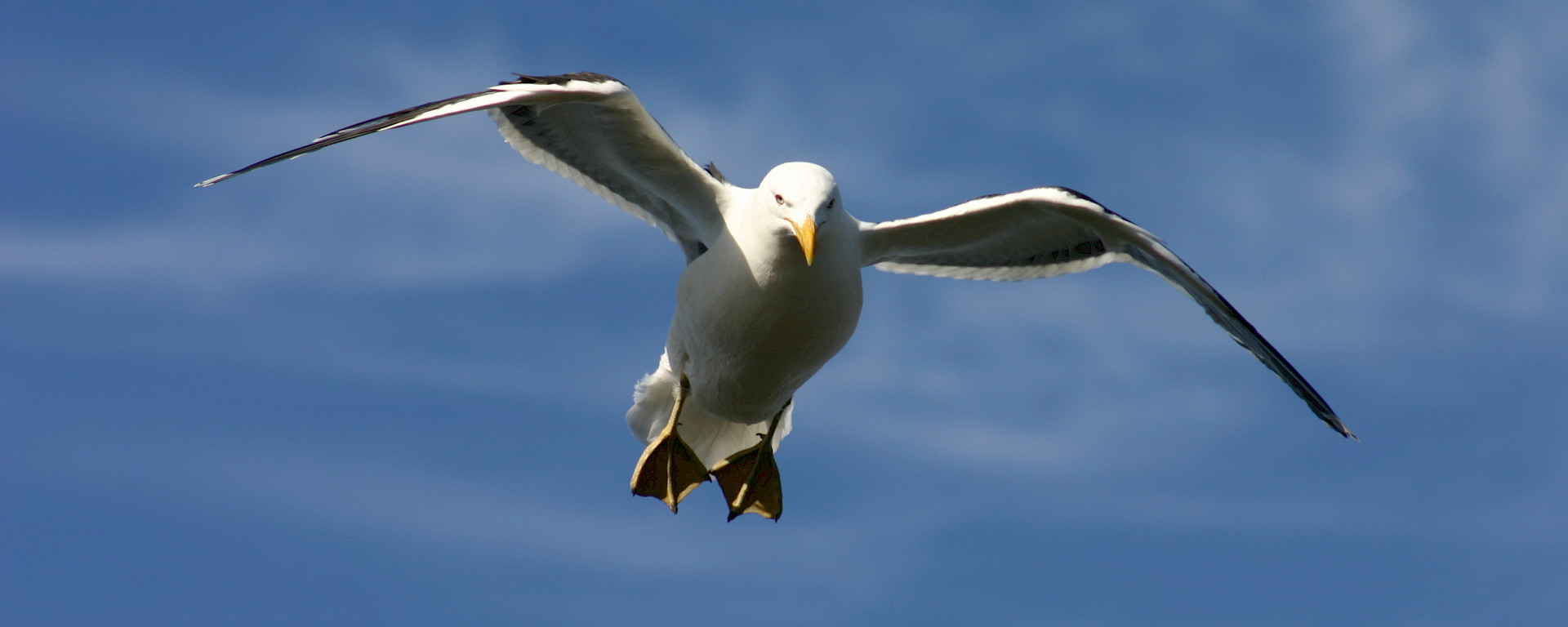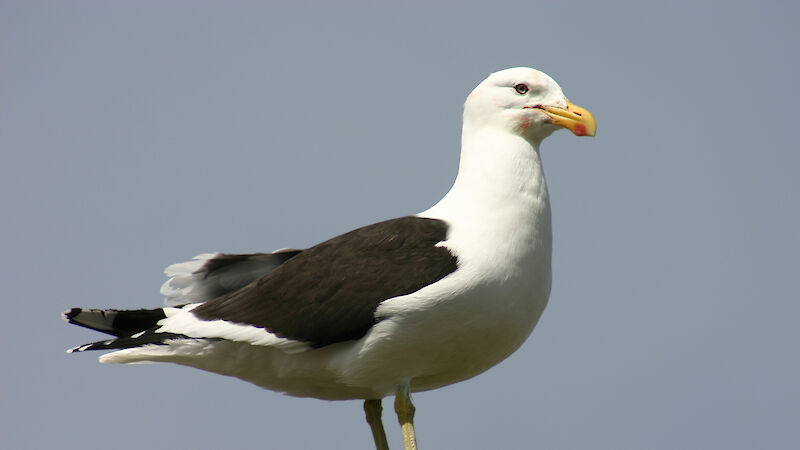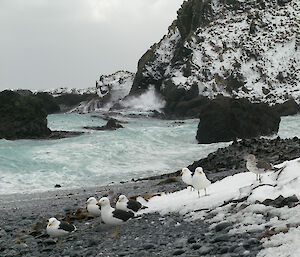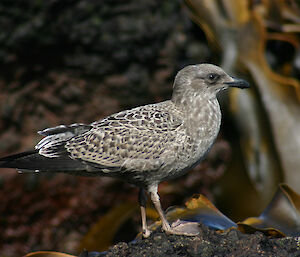Scientific name: Larus dominicanus
Name derivation
The species name is thought to come from the Dominican order of friars who wore black and white habits.
Physical description and related species
Kelp gulls have a white head, neck, underbody, rump and tail. The saddle and upperwing is slate-black with a white leading edge. The wingspan is 106–142cm. The yellow bill has a rounded red subterminal spot at the gonys.
Distribution and abundance
Kelp gulls are broadly distributed in the subantarctic to subtropical regions, where sea surface temperatures range from 0° to 23° C. They can mostly be seen off the New Zealand coasts and islands, and along the south and south-east Australian coasts.
Conservation status: least concern
Breeding
Kelp gulls nest on beaches, among rocks, grassy headlands, ledges, glacial moraines and offshore islets. The shapes and materials of the nests vary due to location. They construct bowls or conical mounds or shallow scrapes in sand with grass, seaweed, sticks, shells and debris.
In the subantarctic, Kelp gulls lay three eggs in November to December. Incubation and fledging periods are 23–30 days and 45–61 days, respectively. Parents sometimes continue to feed their chicks after fledging.
Diet and feeding
Kelp gull prey on and scavenge molluscs, fish, crustaceans, other seabirds, and even their own chicks and eggs. They are opportunistic, and their diet varies with season and among localities depending on the availability of food.





